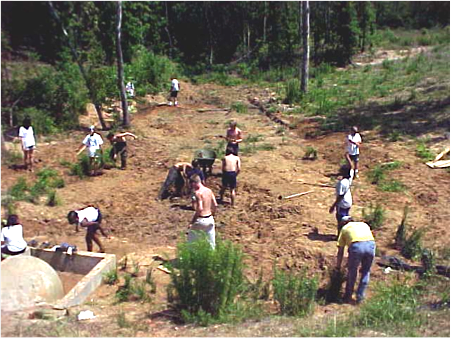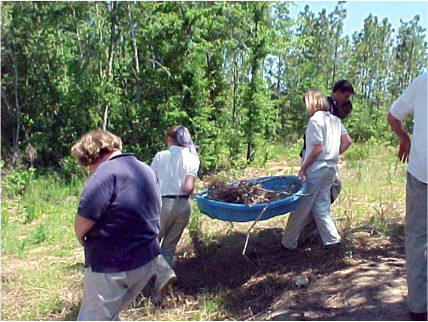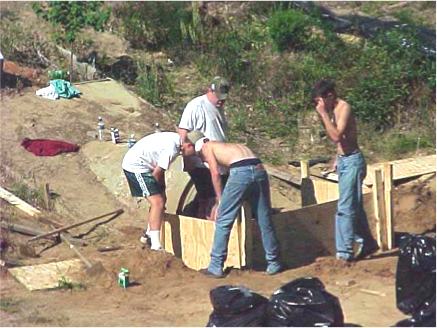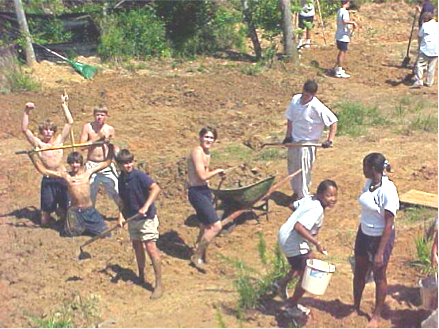Best STEM Earth Day Project Ever
A MiddleWeb Blog

My 8th graders collected and counted beach litter – calculated how long it would take the items they found to biodegrade, arranged them in a display.
Or some years they collected and tested rainwater for the presence of acids, or conducted investigations to determine how different water acidities might affect seedling germination and growth.
Good science projects? I think so. Good STEM projects? Not so much. At that time STEM hadn’t entered my well-ordered science world.
My STEM evolution began with THE Class
That changed when I accepted an 8th grade science position at a newly constructed middle school in Mobile, Alabama. The school’s design and philosophy would allow me to team with other teachers who taught the same students. But the real stimulus behind my shift from a science to a STEM perspective was “The Class.”
I’ll always remember “The Class.” You know the class I mean – the one where kids come in thinking, “I don’t like science. I don’t like math. I don’t see how any of this stuff relates to me.”
My careful planning and preparation did nothing to change their minds. Neither did attempts to help these students experience success by praising their occasional progress. Worse, I kept hitting a blank wall as I struggled to build the vital student-teacher rapport so necessary to learning.
Desperate measures

Our new school facility was causing environmental problems. Excessive sedimentation, coupled with runoff from the oversized asphalt parking lot, drained directly into a creek that fed into the Dog River watershed – and eventually into Mobile Bay.
I wondered what would happen if The Class tackled this real-life problem by building a wetland. Of course, I had no idea how to actually construct a wetland, but the community came to my rescue. So began my first actual STEM project. And I’d never heard of STEM at that time.
Lots of help from many places
The Mobile Area Education Foundation funded the wetland project. A forestry service employee provided advice on the kinds of plants to include. Dr. Kevin White, a civil engineering professor, helped The Class understand the impacts of the sedimentation and runoff, and the role of a wetland in addressing this problem.
Dr. White led the students in a scouting expedition around the campus and helped them apply appropriate criteria to select a site for the wetland. Students from his engineering classes scoped out the situation and recommended a wetland design as my students shadowed them. Suddenly my students began to see how science and math intersected to solve this real problem. Moreover, they cared because they realized that they could do something to help solve it.
The PTA provided plants for the wetland with input from Master Gardeners. Parents who normally appeared at school only for discipline conferences brought building materials and provided students with tips about constructing a weir to back up water in the wetland. Chronically tardy students arrived before school with shovels, rakes, hoes, nails, hammers, and other materials they needed to construct the weir, shape the wetland area, and relocate plants.
Students who typically antagonized one another in classrooms began to work in teams to make this real work happen smoothly. I didn’t know how to organize construction crews, and I watched in amazement as the kids organized themselves and passed off work to one another when they gave out.
School personnel also pitched in. Coaches allowed muddy students to track across the gym floor and use the showers in the locker rooms to clean up. Custodians mopped up the mud with good humor. The other members of the eighth grade teaching team repeatedly and willingly rearranged their class schedules to accommodate the time needed to construct the wetland.
The Class came alive
Somewhere along the way, members of The Class “connected” with math and science, and they engineered a working wetland. Quite a few knew a lot about construction work and they willingly communicated that knowledge to me and to other students.
Previously labeled as “lazy,” these teens worked together long hours in the blistering heat. The project foreman, a young man who had failed twice, interpreted the detailed schematic diagrams provided by the engineering class and kept the project on track. Disinterested math students seemed to understand exactly why they needed to calculate areas and angles to build the frame for the weir. And they constructed and dismantled the weir twice because they didn’t get the angles right the first time.
More important than constructing the wetland, these students finally experienced success. They learned science concepts and saw a reason for knowing these things. They applied math that previously had made no meaning for them. They learned how to apply an engineering process to a real world problem.
They also worked together seamlessly in teams. They actually looked forward to school. “The Class” taught me a lot about teaching STEM that year, whether I knew it or not. I’ll always be grateful to them.
How did we do this at school?!
You’re probably wondering by now how I pulled this project off during a regular school day in a regular public middle school. Here are some of the ways:
• I had a principal who valued learning more than testing and allowed me to experiment with ways to teach these disengaged students.
• I taught with a teaching team of four other teachers who willingly went along with this idea, arranging and rearranging their schedules so that I had the blocks of time I needed for the students’ work. (Did I mention that the principal allowed each teaching team to determine their own schedules, within parameters?)
• My grade level teammates let students continue the wetland project through writing about it, checking mathematical calculations, and learning of other places where water pollution was a problem.
The first and the best
My first and best STEM project ever (and I didn’t even know about STEM) finished up around Earth Day, with lots of earned praise for the students, and for the many adults in and out of school who supported them. Your teaching world is likely much different than mine was, but you can still pull off miracles by involving students in real STEM projects that allow them apply what they know to create technologies and make a difference. Once you experience the amazing impact real STEM learning can have on disengaged students, you’ll never look back.
And as you look and plan ahead, Earth Day 2015 might be a great culmination point to target. For one thing, the Earth Day “window” is a time when the media is particularly attuned to STEM projects connected to the environment. And the promise of good publicity can move lots of barriers out of the way.




































Anne—What an inspirational story! I’m sure most every teacher out there can identify with The Class–and many will be moved to embark on their own STEM project to engage Their Class and bring relevance to math and science and joy to their students. Thank you so much for sharing with all of us!!
Fantastic experiential learning!